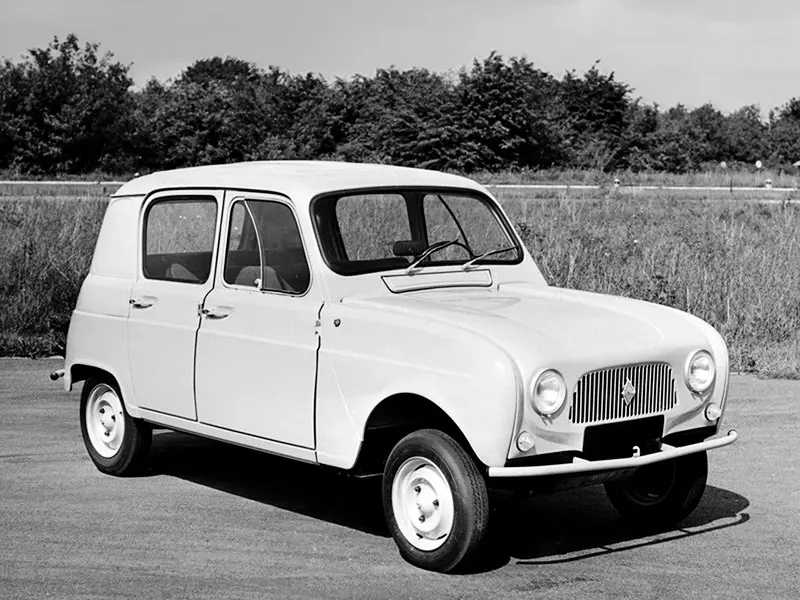THE SHORT BUT FASCINATING SAGA OF THE RENAULT R3
10 May 2022
It goes without saying that when the R4 made its bow in 1961, it altered Renault’s future and small European cars per se. Not only was it the company‘s first car with FWD (the front-wheel-drive Estafette van debuted in 1959) it also popularised the five-door format for the mass market. By contrast, the R3 version was exceedingly short-lived, yet at one point, Renault had great hopes for its success.
La Regie intended the R4 to appeal to middle-class town dwellers and farmers alike, issuing instructions to dealers on the specific sales advantages to their ‘clientele urbaine’ and the ‘clientele rurale’, respectively. By contrast, the R3 targeted France’s agricultural communities, Francophone export territories and any motorist with little interest in creature comforts. Moreover, power was from a 603cc engine, which ensured a place in the ‘3CV’ engine category – thereby presenting Citroën 2CV drivers with a viable Renault alternative.

The R3 debuted alongside its R4 stablemates, and visitors to the 1961 Paris Salon were undoubtedly mesmerised by its lack of equipment. Surprisingly, a heater was a standard fitting, but there was a distinct lack of C-pillar windows, a passenger sun visor, door trims, windscreen washers and even headlining.
To further establish the R3’s status, Renault deemed a fuel gauge surplus to requirements. Instead, a dipstick attached to the filler cap alerted drivers to when they were running low. Forgetting to carry out regular petrol tank inspections could leave you stranded in the middle of Aquitaine or Brittany.
Naturally the R3’s chrome trim was virtually non-existent, while the colour choices were best described as three shades of grey. The early models were finished in the ultra-glamorous ‘Gris Olivier 610’, which was succeeded by the thrilling ‘Gris Templier 618’. As for the last versions, they featured a paint finish in the ever-popular ‘Gris Pyramid 635’.
However, it should be remembered that a 1961-vintage 2CV was not exactly the last word in luxury, and for circa 4,800 francs, the R3 seemed the ideal Deux Cheavaux competitor. It may have lacked the Citroën’s folding roof, but it did offer the versatility of a tailgate plus a more contemporary appearance.
Alas, sales remained limited - the R3 was never available in the UK - and Renault ceased production in 1962 after just 2,571 units. One problem was that for around 150 francs more, the buyer could opt for the base-model R4, which was just as Spartan but at least it boasted a 747cc engine. Citroën owners also tended to remain loyal to the 2CV, but the main issue with the R3 was that too many French motorists of the early 1960s craved the top-of-the-range R4L.
Today, any R3 is an object of great fascination - a rare example of genuinely minimalist family transport. And it certainly embodied Renault’s sales slogan for the R4 range – “pas d’eau, pas de graissage, juste un peu d’essence”, translated as “no water, no greasing, just a bit of petrol”.
